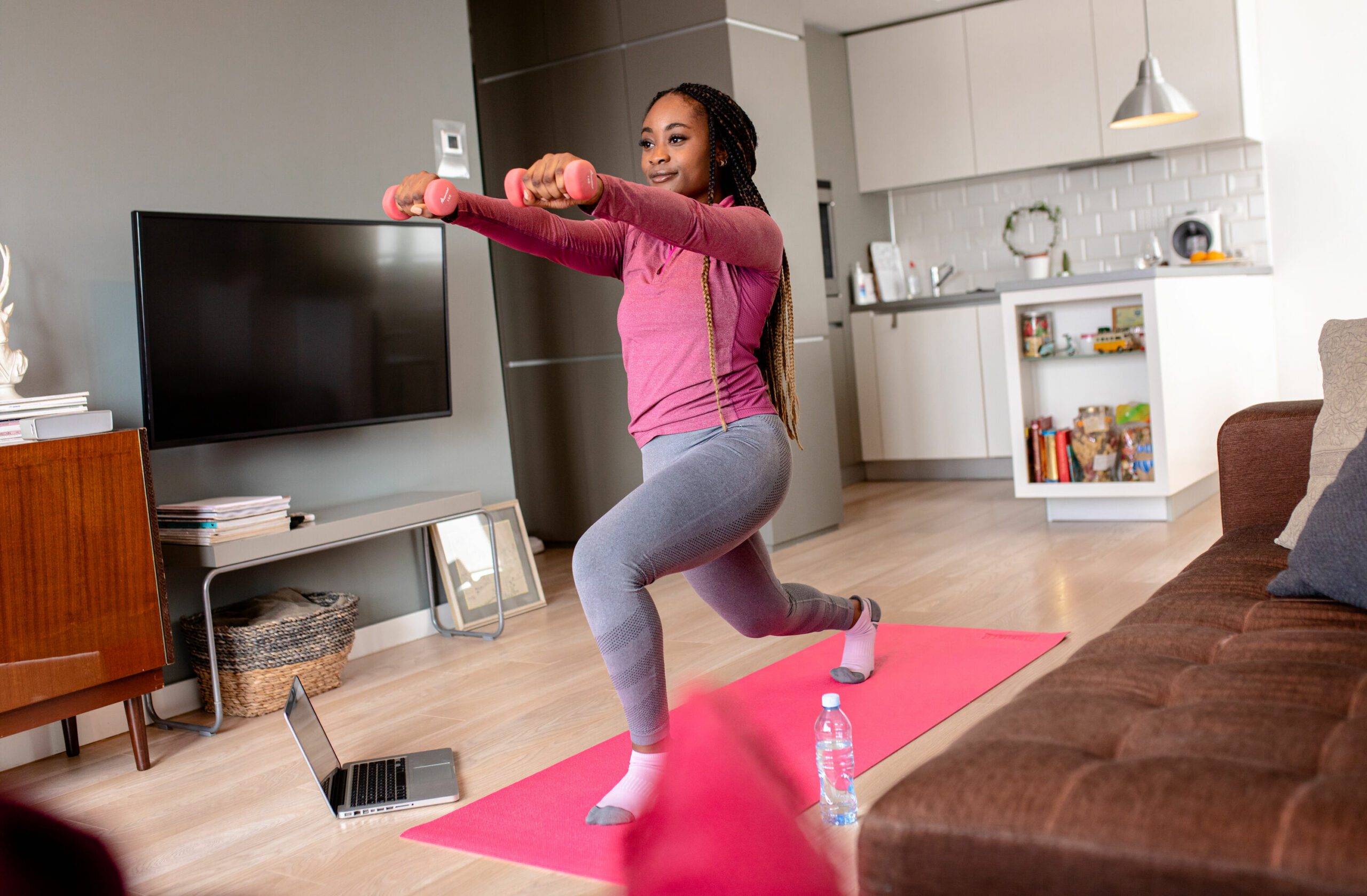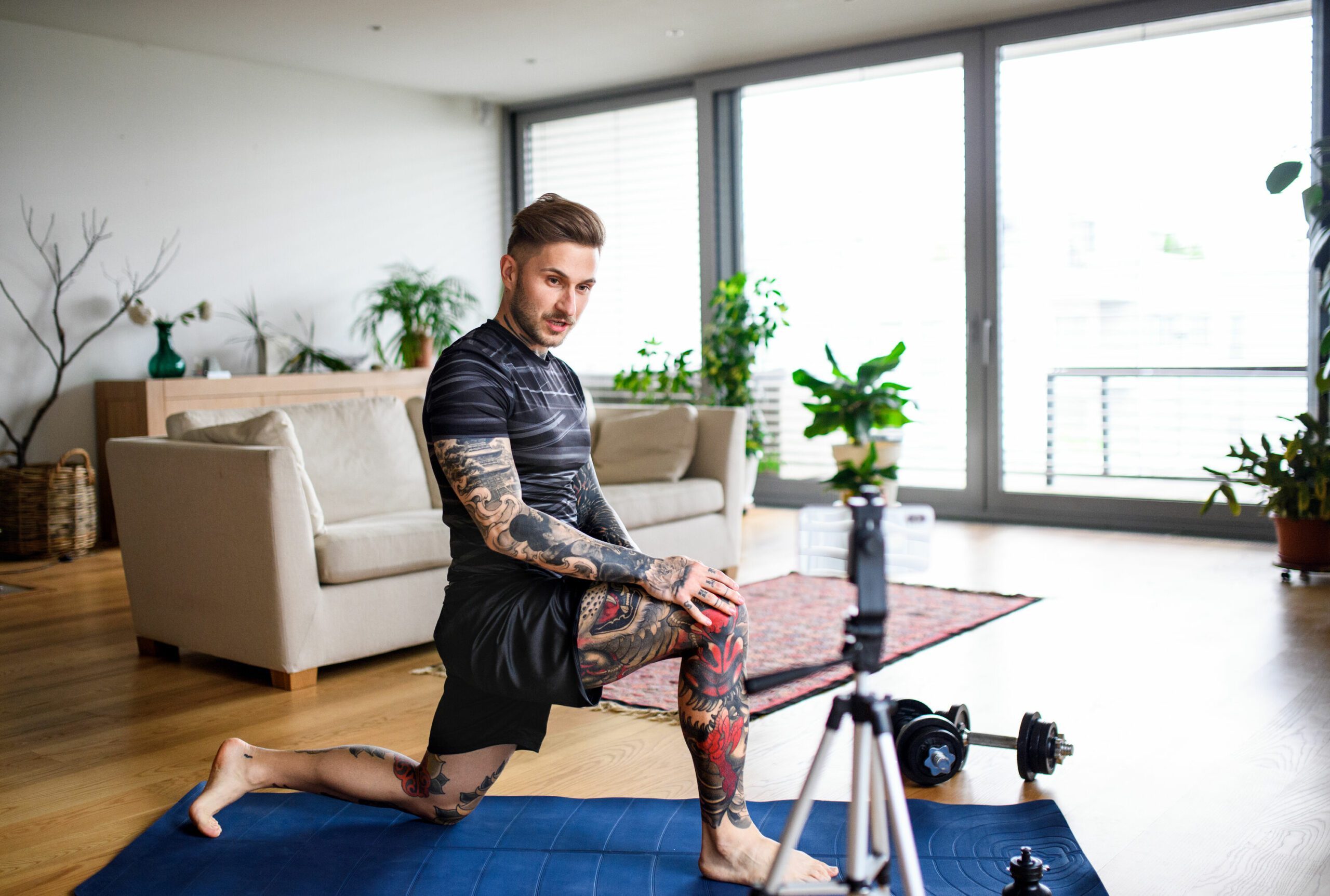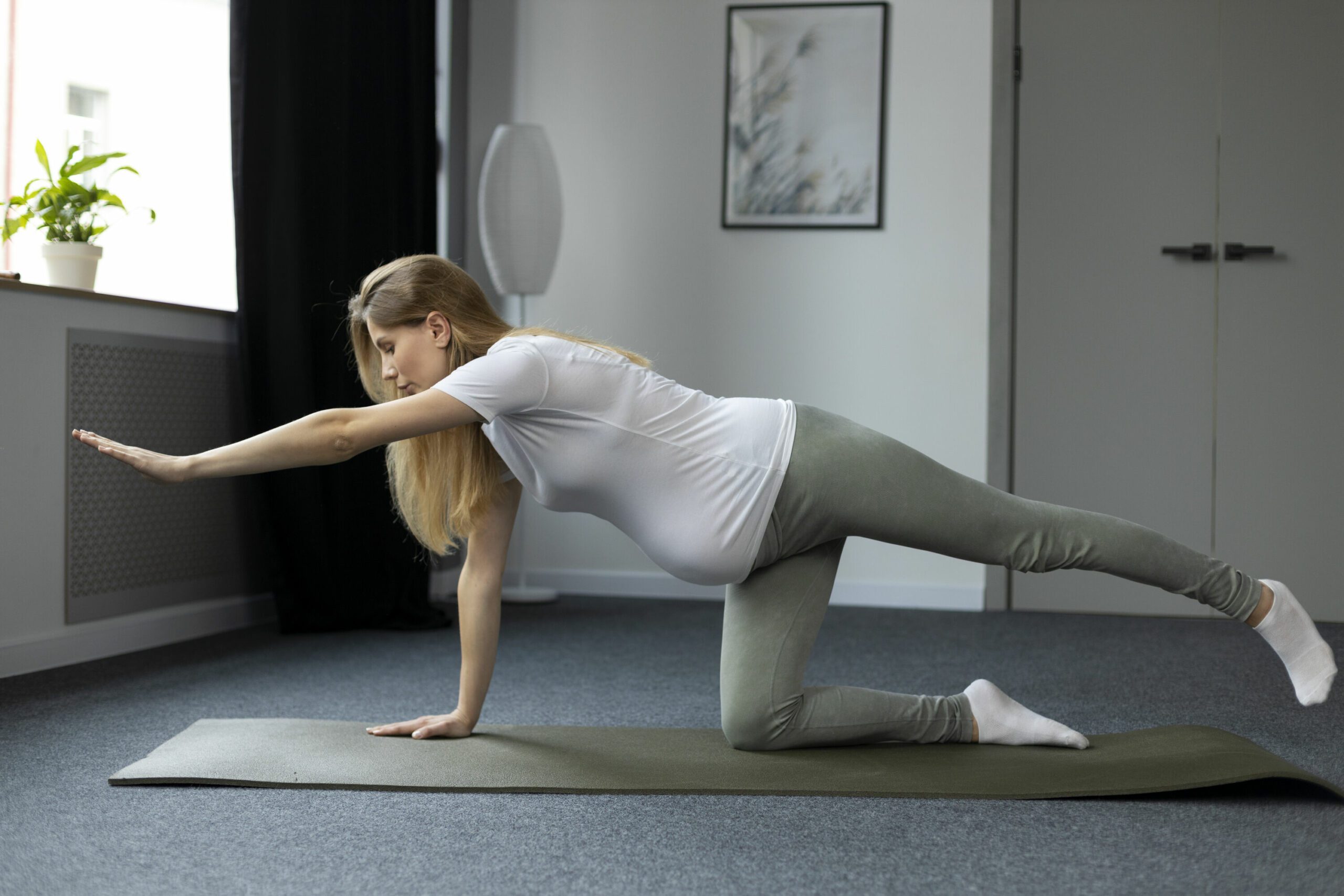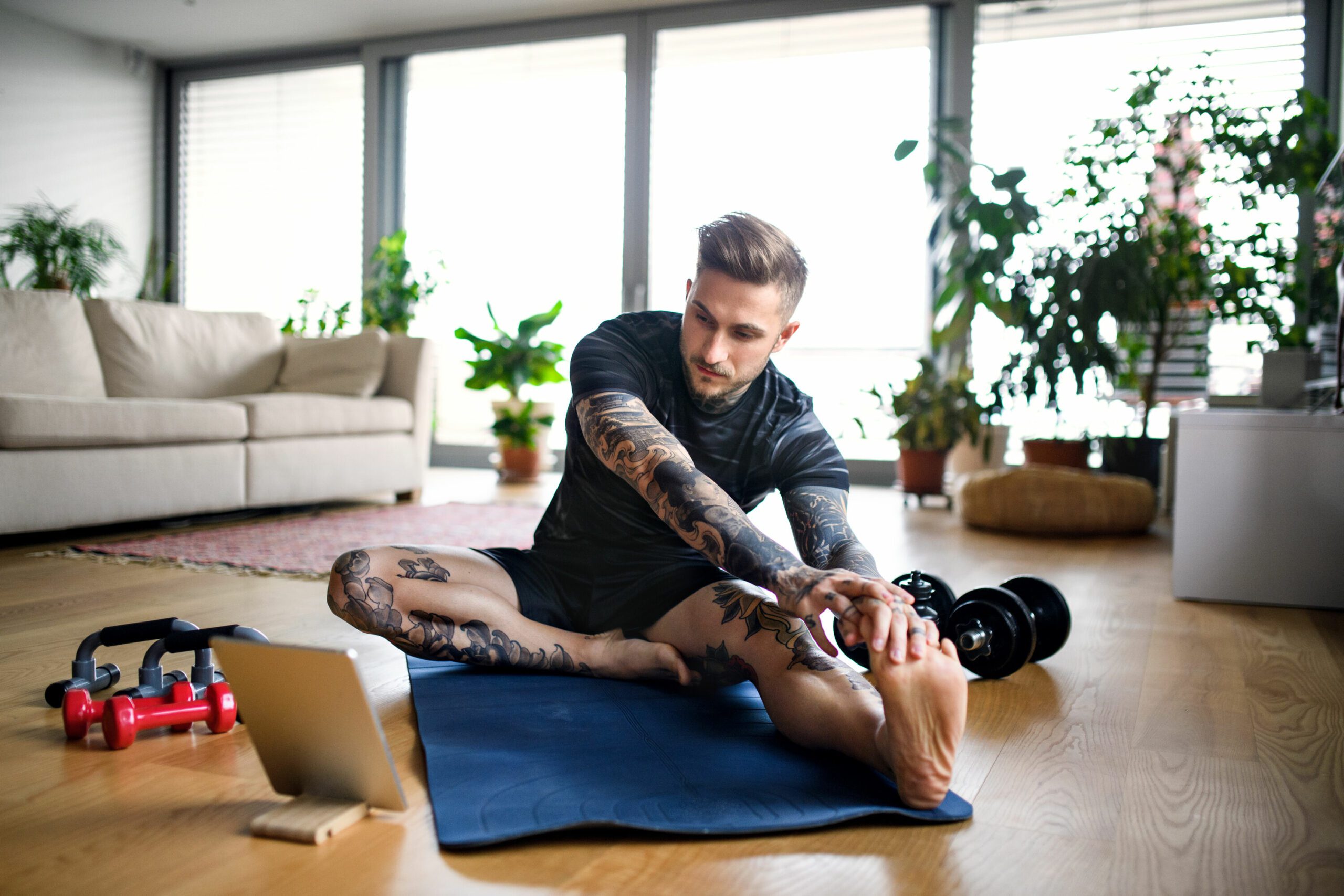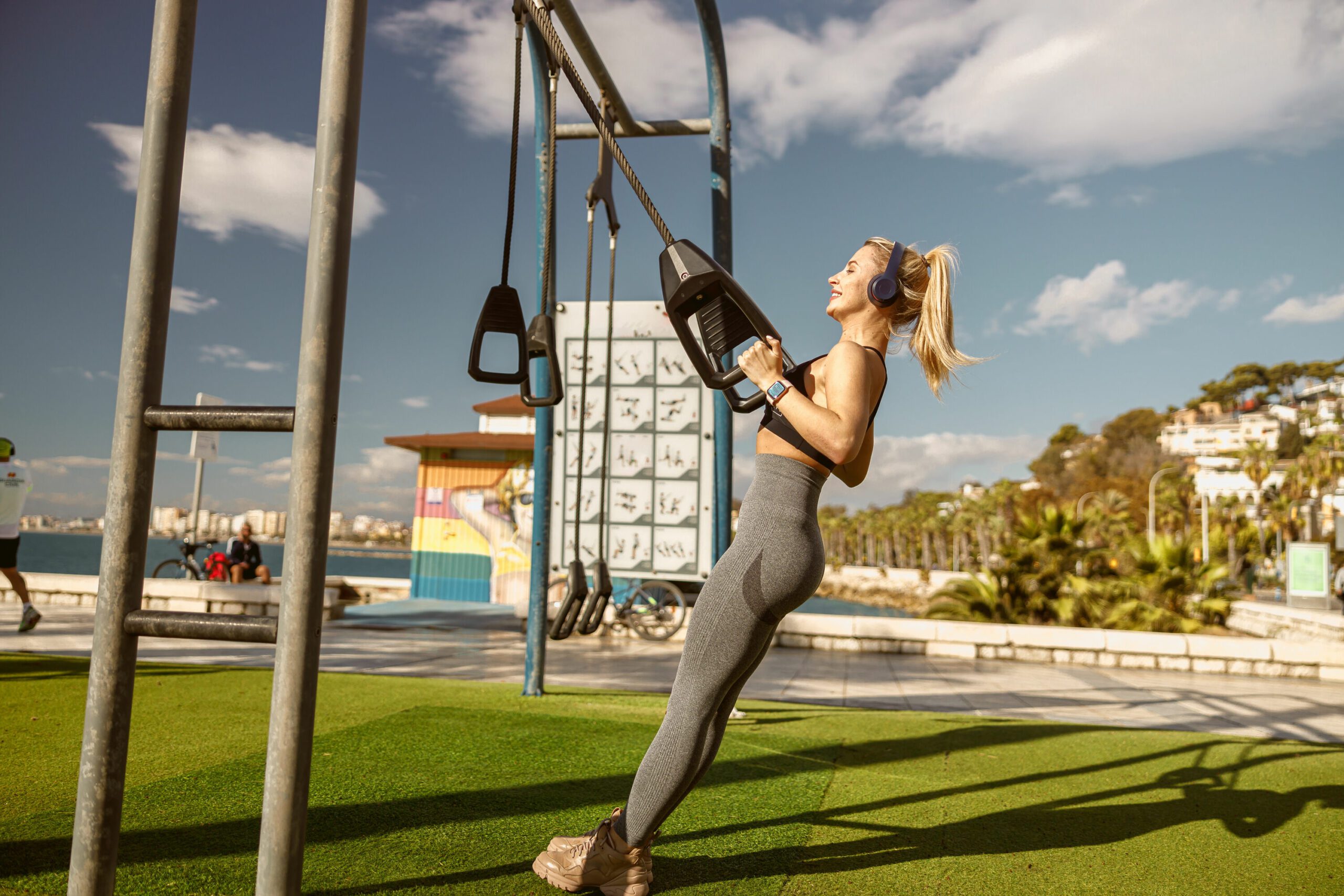There are plenty of reasons that people don’t like exercising at the gym. While some people can feel uncomfortable or embarrassed within the gym environment, others find it difficult to physically get there due to work or caring commitments.
Many others just want the convenience of staying at home to work out without having to travel anywhere. However, although the concept of working out in your own home seems like a great idea, it can be hard to know which exercises to actually do, especially if you’re not used to exercising regularly. Here are some top tips to get you started with your in-home workout plan.
Use Your Own Bodyweight
The easiest way of working out in your own home is by using your body. There are lots of effective workouts you can do to build up your endurance and strength while burning calories. With circuit training, your heartrate will be kept up, burning even more calories and maximising your workout time.
When you’re exercising at home using only your own body weight, you can opt for strength training, cardio, or combine the two for an effective workout. When you opt for cardio, you should choose exercises at different intensity levels for the best impact.
As an example, you could alternate between high-intensity exercises such as burpees or jumping jacks, and easier moves like marching on the spot. If you opt for a strength training workout, choose pulls, pushes, back and front of leg, and core moves like lunges, squats, dips, and push-ups.
If you’re a complete beginner, it’s best to start with 10-30 seconds or 8-16 reps. If you’re more advanced, you could start out at 60-90 seconds or over 20 reps. Use a stopwatch or timer, switch some music on and begin by warming up to prevent injuries. If you only have limited time or you’re new to working out, just do a single circuit, but if you want an intense working do 2-5 circuits.
A sample circuit workout for strength training would look a little like this:
March on the spot for 1 minute as a warm-up.
20 reps – squats
12 reps for each leg – reverse lunges
10-12 reps – push-ups (on toes or knees)
10-12 reps – dips
10-12 reps – walking lunges with the arms overhead
10-12 reps – lateral leg lifts
30-60 seconds – plank
10-12 reps – glute bridges
10-12 reps – back extensions
Buy Versatile Workout Equipment
If you’re going to be consistently working out in your own home, it’s a good idea to buy fitness equipment to use. The equipment you opt to add to the home gym depends, of course, on any space limitations and your budget.
Unless you have a lot of money to spend and plenty of available space, it’s best to opt for versatile equipment rather than pieces that are only for specific movements. Suspension trainers, kettlebells, and adjustable dumbbells are all good choices since they can be used for many body parts and exercises.
At Home Strength Training
If you’re a beginner, you can start by using fewer weights just as long as you feel challenged during your training. As your strength develops, you’ll be able to increase the weight. If you’re brand-new to weight lifting or lack strength, you could opt for resistance bands and body weight instead, then add more equipment when you progress further.
If you’re already advanced, you might wish to choose heavier weights as well as extra strength training equipment pieces to add novelty, challenge, and variety to your workouts. This will also ensure you continue to progress.
At Home Cardio Training
If you’re going to do cardio training at home, you could simply use bodyweight movements. However, if that doesn’t inspire you, choose versatile pieces of cardio workout equipment that you’ll be able to use consistently. A treadmill is one excellent example since you an walk or run either at an incline or on a flat surface.
An affordable cardio idea that’s also easily stored away for at-home use is a skipping rope. There are lots of types of skipping ropes, including weighted ones to build muscular endurance and ones for speedwork. A mini trampoline (also known as a rebounder) and lightweight kettlebells are also good choices.
If you work at home, why not opt for a treadmill desk? This will allow you to add exercise into everyday life as you’ll be able to walk while you work. Underneath your desk, you could also add a stepper or bike pedals. This equipment is also useful for helping to keep you fit while you read or watch TV.
Naturally Building Movement Into Each Day
Not everybody enjoys structured workouts, and some people have difficulty in finding enough time each day to exercise. In such cases, it’s a good idea to look for activities that don’t fit into the traditional workout bracket. Boosting your daily movements can have a positive impact on your help, especially if it’ll replace sedentary activities.
If you’re active during the day, non-exercise-related activities can represent as much as half of your calorie burn each day. Staying active also brings a host of health benefits such as a reduced heart failure risk and improved mental well-being.
Build movement into your day by setting a timer to remind you to move about each hour, walk rather than drive when performing nearby errands, and go for an evening walk rather than watching TV. Hobbies such as gardening, and activities such as cleaning and DIY all boost your daily movement too.
If you want more options to increase your everyday activity levels, working out in your own home is an excellent choice. It’s far more convenient to exercise at home, and it’s far easier to access when compared with physically going to a gym. Using your own bodyweight can help you get started with an at-home workout without the need to invest in any equipment at all, although buying a few affordable key pieces can have a huge impact on the kinds of workouts you can do and the level of fitness you can attain.

